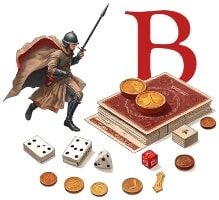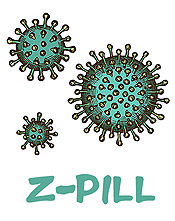The correct guard accomplishes the following:
1. Narrows your target area
2. Refuses your weapon hand
3. Places your weapon in a reactive blocking position
4. Places your empty hand in a reactive blocking position
5. Coils your legs under you so that you are on balance, enabling you to step, shift or lunge in any direction
6. Shows a neutral weapon orientation, placing the weapon and the wielding hand in a position to throw a backhand or forehand without preparatory movement [referred to hereafter as ‘chambering’]
7. Note: in many blade fighting applications the guard is right side forward—even if the fighter is left handed—so as to deny access to your heart. With this in mind, if you are left handed train both sides. For in a survival situation in which you have a stick or other blunt extension weapon, the enemy may be expected to have a knife.
The On Guard Exercise
This exercise uses strong and weak instead of right and left. The strong hand is the lead hand, and the strong foot the lead foot, except for specific tactical movements that will be covered under shifting. Once your guard is taken, and the discussion of offensive and defensive action follows, the terms used will be lead and rear. The lead hand will—as the weapon begins to focus your mechanics—be referred to as the stick hand, with the rear hand referred to as the empty hand, live hand or checking hand.
1. Take up your stick in your strong hand with four fingers of butt left between your pinkie and the bottom of the stick.
2. Stand squarely with your feet spaced evenly under your hips or your shoulders, depending on your build and balance preference.
3. Turn the toe of your weak foot outward to 45 degrees.
4. Step forward with your strong foot so that the heel of the strong [lead] foot is lined up with the weak [rear] foot.
5. Turn the toe of the lead foot inward up to 45 degrees. This closes off your centerline and permits pivoting without damaging your knee. If you kept a point-on lead foot orientation and tried a hard pivot, you might blow out your knee. This is a closed boxing guard.
6. Your rear shoulder should be over the rear hip. Muscular men sometimes have trouble with this. Check the shoulder.
7. Bring your open rear hand up to its ‘live’ position over the heart.
8. Bring your stick hand to the area between your hip and your ribs. It should rest beneath the protection of your shoulder and chest muscle. To achieve this refused hand your elbow will be drawn back as in the traditional karate reverse punch chambering position. This will feel strange, but must be accomplished in a relaxed fashion. Some part of your forearm should be in contact with your body. It is important to move this hand in unpredictable ways.
9. The stick is held with the thumb, forefinger and pinkie lightly controlling the weapon as the middle and ring finger apply stabilizing pressure. This hammer grip has the thumb and forefinger wrapping around the stick, not pointing up it. The thumb should close and secure the grip by applying pressure to the last joint of the forefinger.
10. The stick is held diagonally across the body to provide protection for the weak side of the neck, face and head. Those are the three levels of the guard, neck, face, head. Depending on your build and stick length holding the stick hand up high enough to cover the temple might set the stick hand up on the barrel of the chest and expose it as a smash target. Most fighters opt to carry the stick hand in the hollow just below the ribcage and deny only the neck and jaw, counting on their reaction ability, or the checking hand, to pick off shots to the temple.
11. You should sight on your opponent just over the sweet spot or tip of your stick, depending on whether you are using low, mid or high guard.
The guard is your combative reference point, and is not a fortress. The position, and variations on it described above, provides a marshalling point for action. I have not used the ossifying term ‘stance,’ and will not. Whatever kind of fighter you are, scrub ‘stance’ from your vocabulary. The guard is your action platform for alternately dominating and denying the combat space.
Henceforth, in this guide, the contents of this section will simply be referenced as “the guard.” I recommend you practice the guard exercise extensively in the mirror so that the taking of your guard becomes instinctive. In fact, where survival is concerned, just having an instinctive guard is worth more than all of the martial arts tricks in the arsenal.
Note: there are other guards, such as the shoulder load, stick boxing and backhand guard. These are advanced guards. And, I have found, that the very best stick fighters stick to the basic guard. Stick fighting has so many possibilities, and so few practicalities, that he who masters the basics might be the best, without ever bothering with the rarified nuances of the high art.
In reference to Sean's comment below, the lead foot turns "up to 45 degrees," and may float back to 10 degrees, and on occasion be point on, for the thrust. Just as the lead foot tends to float toward point for some fighters, the rear foot, for some fighters, and when loading weight on the rear foot with a bent knee, will kick out to 90 degrees. Overall, keep in mind that if your lead foot is point on and your rear foot is perpendicular to it, that your groin will be opened up and torqueing will be less efficient. These parameters may be less flexible for some fighters because of ankle, knee or hip injuries or conditions.











Lots of good info here. Ive been practicing for Tuesday and I can tell you the lead foot 45 degrees in guard is really awkward for me.
We will work on this. It will help your boxing.